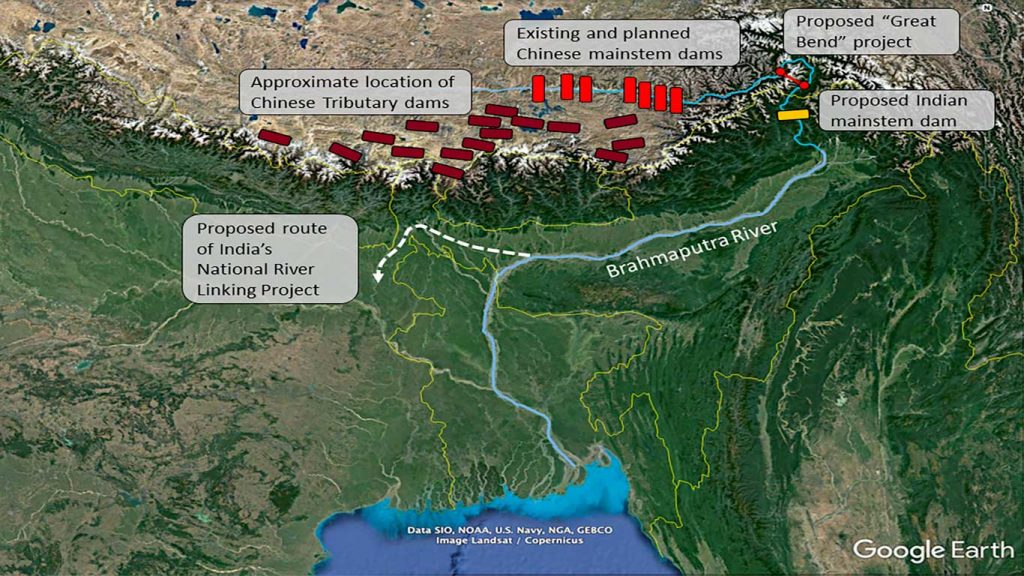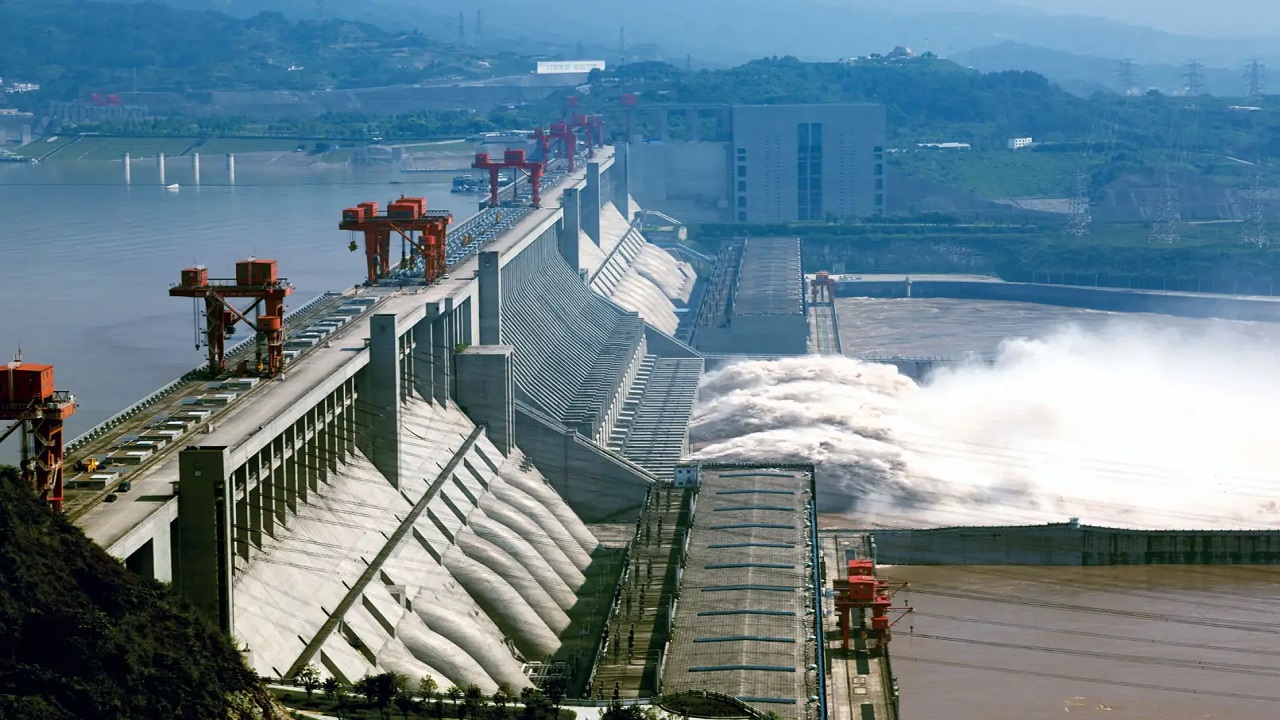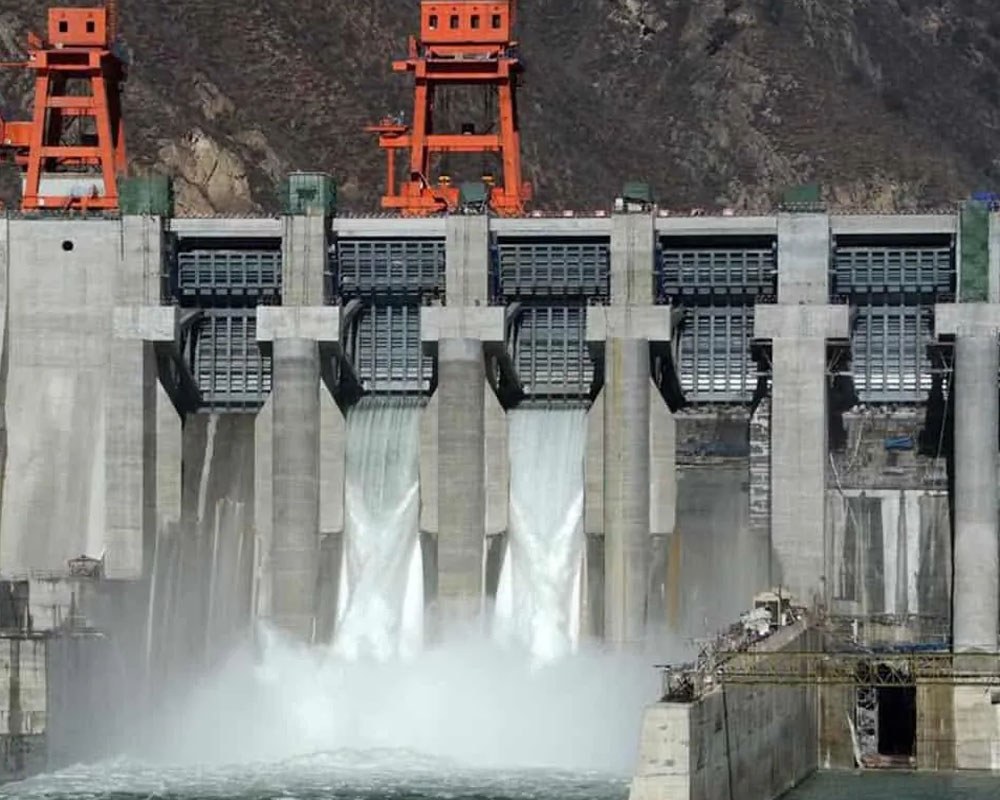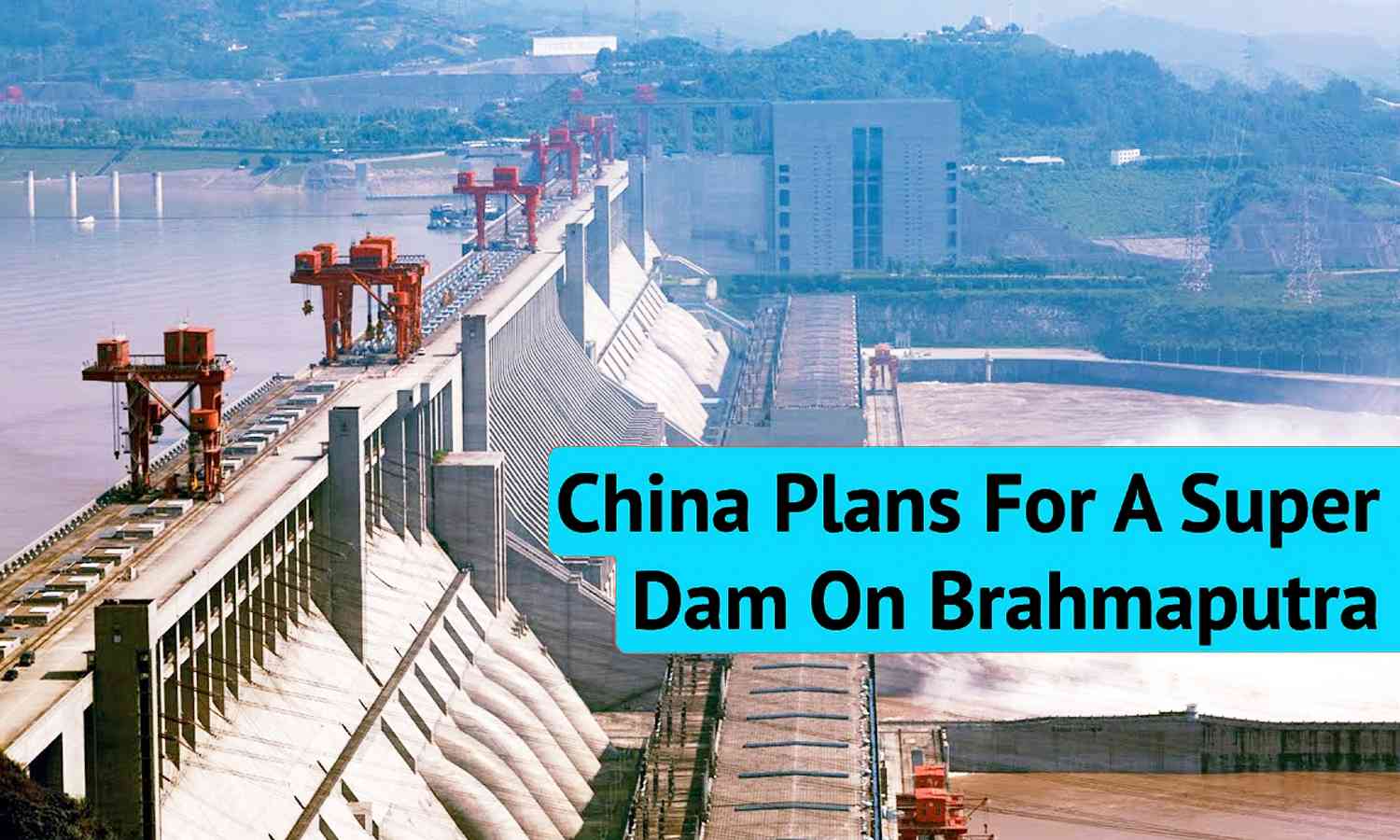India has expressed serious concerns following China’s announcement to construct a colossal hydropower dam on the Brahmaputra River in Tibet. The project, situated near the border with India, poses potential risks to downstream states such as Arunachal Pradesh and Assam, as well as to neighbouring Bangladesh. The announcement has triggered apprehension over its possible impact on water security, ecological balance, and regional relations. The Brahmaputra River is a lifeline for India’s northeastern states, providing essential water for irrigation, drinking, and hydropower generation. Any significant alteration to the river’s natural flow could jeopardise water availability, particularly during dry seasons. India fears that the dam may grant China strategic control over the river’s flow, enabling it to exert influence during times of political discord.
The proposed dam site lies within the fragile and seismically active Himalayan region, raising environmental concerns. Large-scale construction in such an ecologically sensitive area risks destabilising the region’s delicate balance. The potential consequences include soil erosion, loss of biodiversity, and increased vulnerability to landslides. For Arunachal Pradesh and Assam, which depend on the river for agriculture, fisheries, and local livelihoods, the environmental disruption could prove devastating. In response, India has adopted a multifaceted approach. Diplomatically, it has lodged formal protests with Beijing, urging it to ensure that the interests of downstream states are not compromised. India has also reiterated the need for transparency and consultation through expert-level and diplomatic channels. Domestically, the government has signalled its intent to closely monitor the situation and implement necessary measures to protect national interests. Accelerating India’s own dam-building projects on the Brahmaputra may be one way to assert its rights over the river.

The main reasons this project poses a significant impact:
Water Flow and Availability
The Brahmaputra River is a critical water source for northeastern India, especially Assam and Arunachal Pradesh. Any upstream damming or diversion of the river could:
Reduce Water Flow: The dam might alter the river’s natural flow, particularly during the dry season, affecting water availability downstream.
Flood Risks: Sudden releases of water, whether due to operational needs or accidents, could exacerbate flood risks in downstream areas, especially during monsoons.
Agricultural and Ecological Disruption: Changes in water availability could harm agriculture, fisheries, and the overall ecosystem in India’s northeastern states and Bangladesh.
Geopolitical Tensions
China’s dam-building activities are likely to escalate existing tensions between the two countries, especially given the following factors:
Lack of Transparency: China has not entered into a formal water-sharing agreement with India, and its lack of transparency about hydrological data and dam operations could fuel mistrust.
Border Disputes: The dam construction coincides with ongoing territorial disputes, such as in Arunachal Pradesh, where China has recently renamed areas and created new administrative counties. This move is seen by India as an attempt to assert sovereignty over disputed territories.
Strategic Leverage: The dam could give China a degree of control over water resources critical to India, potentially turning water into a geopolitical tool.
Environmental Concerns
Ecosystem Disruption: The construction and operation of such a large dam could disrupt the fragile Himalayan ecosystem, leading to soil erosion, habitat destruction, and biodiversity loss.
Seismic Risks: The region is seismically active, and the dam’s construction increases the risk of earthquakes and landslides, potentially endangering millions downstream.
Economic Implications
Hydropower Rivalry: China’s massive hydropower project could overshadow India’s efforts to harness the Brahmaputra’s energy potential, affecting India’s plans for regional energy security.
Impact on Livelihoods: Reduced water availability or altered flow patterns could harm the livelihoods of millions dependent on agriculture and fishing in India’s northeastern states and Bangladesh.
Diplomatic and Strategic Responses
India has already raised concerns with China and is likely to pursue a combination of diplomatic, strategic, and technical measures, including:
Strengthening Bilateral Dialogues: India will likely push for greater transparency and formal water-sharing agreements with China.
Regional Cooperation: Collaborating with Bangladesh, which also relies heavily on the Brahmaputra, could strengthen India’s negotiating position.
Infrastructure Development: India may accelerate its own dam and hydropower projects on the Brahmaputra to assert its rights and mitigate potential Chinese influence.
International Advocacy: India could highlight the issue in international forums, framing it as a matter of environmental and human rights concern.

Flooding presents another pressing concern. The dam’s ability to store vast amounts of water could heighten the risk of catastrophic floods downstream if sudden water releases occur, whether due to accidents or deliberate actions. Such events would compound the challenges faced by communities already grappling with seasonal flooding. A significant issue exacerbating India’s concerns is the lack of transparency surrounding China’s water management projects. Despite repeated calls for openness and consultation, Beijing has remained opaque about its plans. The absence of a formal water-sharing agreement between the two nations further deepens mistrust. India has consistently urged China to engage in dialogue with downstream countries to ensure that their interests are safeguarded, but these appeals have largely gone unanswered.
China, on its part, has sought to downplay the apprehensions. It has provided assurances that the dam will not harm downstream regions and has promised to maintain communication through existing channels. Chinese officials have even suggested that the project could bring benefits, such as improved disaster prevention and relief measures. However, the scale and strategic location of the dam suggest motivations that extend beyond energy generation, raising suspicions about its broader geopolitical intentions.
Bangladesh, which lies further downstream, is also likely to be affected by changes in the Brahmaputra’s flow. As the river plays a vital role in Bangladesh’s agriculture and fisheries, any disruptions could have significant economic and social consequences. The dam project adds another layer of tension to the already strained relationship between India and China, which has been marked by territorial disputes and military confrontations. It also casts a shadow over India’s own hydropower initiatives on the Brahmaputra, potentially undermining its energy security efforts.

Additionally, India is likely to strengthen its partnership with Bangladesh, fostering regional cooperation to address shared concerns. Internationally, India may seek to highlight the environmental and humanitarian risks posed by the Chinese dam, leveraging global platforms to build pressure on Beijing. China’s planned mega-dam on the Brahmaputra represents a significant challenge for India, Bangladesh, and the broader region. While Beijing has sought to reassure downstream nations of minimal impact, the project’s scale and opacity have heightened fears of long-term consequences. India must pursue a balanced strategy, combining diplomacy, regional collaboration, and infrastructure development, to safeguard its ecological and strategic interests. The situation underscores the urgent need for a transboundary water-sharing framework to ensure the sustainable and equitable management of shared rivers.
With inputs from agencies
Image Source: Multiple agencies
© Copyright 2024. All Rights Reserved Powered by Vygr Media.






















